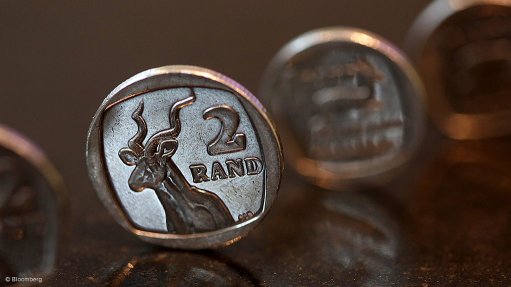Engineering design that’s deplorable
My experience with my Mercedes-Benz C180 has been an engineering delight.
The driving and ride and interior are a matter for discussion in a motoring magazine – I am talking about engineering, bru. Look at the following: you are driving along and a dog runs in front of the car. In many cars, you just have to crunch the dog. In the Merc, you stamp on the brakes hard. The pedal goes floppy and hits the firewall. You think you have broken the brakes. Wrong. You have gone into ABS braking mode and the vehicle stops in seconds. Then let us say you do not do up the seatbelt or you cannot. A warning beeper sounds. Softly first. Then louder. Then the same loudness but at longer intervals. Then it stops, saving you from having to listen to beeb beep beep – just because you have a cooler box on the front seat. Many other features. A lot of thought.
Very many cars have great engineering. What I want to write about is poor engineering (but not of cars).
The poorest engineering around these days seems to occur with computer electrical systems. Let us deal with the server rooms, to begin with. The reasoning here is that a computer server room has racks in it and each rack normally has computer modules. On the module label is the power consumption of the module. Frequently, this is about 1 000 W. Given this, the following happens: it is assumed that each module gives off 1 000 W of heat and, with 12 modules to a rack, each rack gives off 12 kW of heat. With 24 racks, the computer air-conditioning system is rated to cool 288 kW, which results in way more air-con capacity than needed. In fact, the modules are not running at full power all the time and the air con could be smaller.
It is not the consulting mechanical engineer’s fault – it is a fault inherent in the assumption that a module runs at full power, which is a bit like assuming that, a row of ten houses, where each house has a 60 A power supply, draws a total of 600 A. This is way wrong.
The supposed power consumption of the computer room also results in oversized UPS supply and oversized generators. Even worse – very often, the UPS batteries are specified as being a type which, the supplier tells you ominously, deteriorates rapidly if the air temperature exceeds 25 ºC. As a consequence, they supply air conditioning to the battery room. What they should do is use batteries that do not deteriorate with temperature, as is the case in all the UPS systems I have designed.
The generators are not only oversized – they also use the wrong size generator and too many of them. If the expected load is, say, 1 000 kW, the correct installation is a 1 500 kW generator, with another 1 500 kW generator as backup.
However, since the consulting engineers have lost their way, they allow the generator supplier to do the design. The generator suppliers are as sharp as tacks and so, with straight faces, they recommend installing ten 200 kW generators. This is stupid beyond belief, since there are many more machines to maintain and some will run at a low load (always bad for diesel engines). It is also very much more costly than the two-generator option. I doubt, however, that sense will prevail. It never seems to with server installations. Computer mistakes are repeated. Oh well. All the same in 100 years.
Article Enquiry
Email Article
Save Article
Feedback
To advertise email advertising@creamermedia.co.za or click here
Comments
Press Office
Announcements
What's On
Subscribe to improve your user experience...
Option 1 (equivalent of R125 a month):
Receive a weekly copy of Creamer Media's Engineering News & Mining Weekly magazine
(print copy for those in South Africa and e-magazine for those outside of South Africa)
Receive daily email newsletters
Access to full search results
Access archive of magazine back copies
Access to Projects in Progress
Access to ONE Research Report of your choice in PDF format
Option 2 (equivalent of R375 a month):
All benefits from Option 1
PLUS
Access to Creamer Media's Research Channel Africa for ALL Research Reports, in PDF format, on various industrial and mining sectors
including Electricity; Water; Energy Transition; Hydrogen; Roads, Rail and Ports; Coal; Gold; Platinum; Battery Metals; etc.
Already a subscriber?
Forgotten your password?
Receive weekly copy of Creamer Media's Engineering News & Mining Weekly magazine (print copy for those in South Africa and e-magazine for those outside of South Africa)
➕
Recieve daily email newsletters
➕
Access to full search results
➕
Access archive of magazine back copies
➕
Access to Projects in Progress
➕
Access to ONE Research Report of your choice in PDF format
RESEARCH CHANNEL AFRICA
R4500 (equivalent of R375 a month)
SUBSCRIBEAll benefits from Option 1
➕
Access to Creamer Media's Research Channel Africa for ALL Research Reports on various industrial and mining sectors, in PDF format, including on:
Electricity
➕
Water
➕
Energy Transition
➕
Hydrogen
➕
Roads, Rail and Ports
➕
Coal
➕
Gold
➕
Platinum
➕
Battery Metals
➕
etc.
Receive all benefits from Option 1 or Option 2 delivered to numerous people at your company
➕
Multiple User names and Passwords for simultaneous log-ins
➕
Intranet integration access to all in your organisation


















